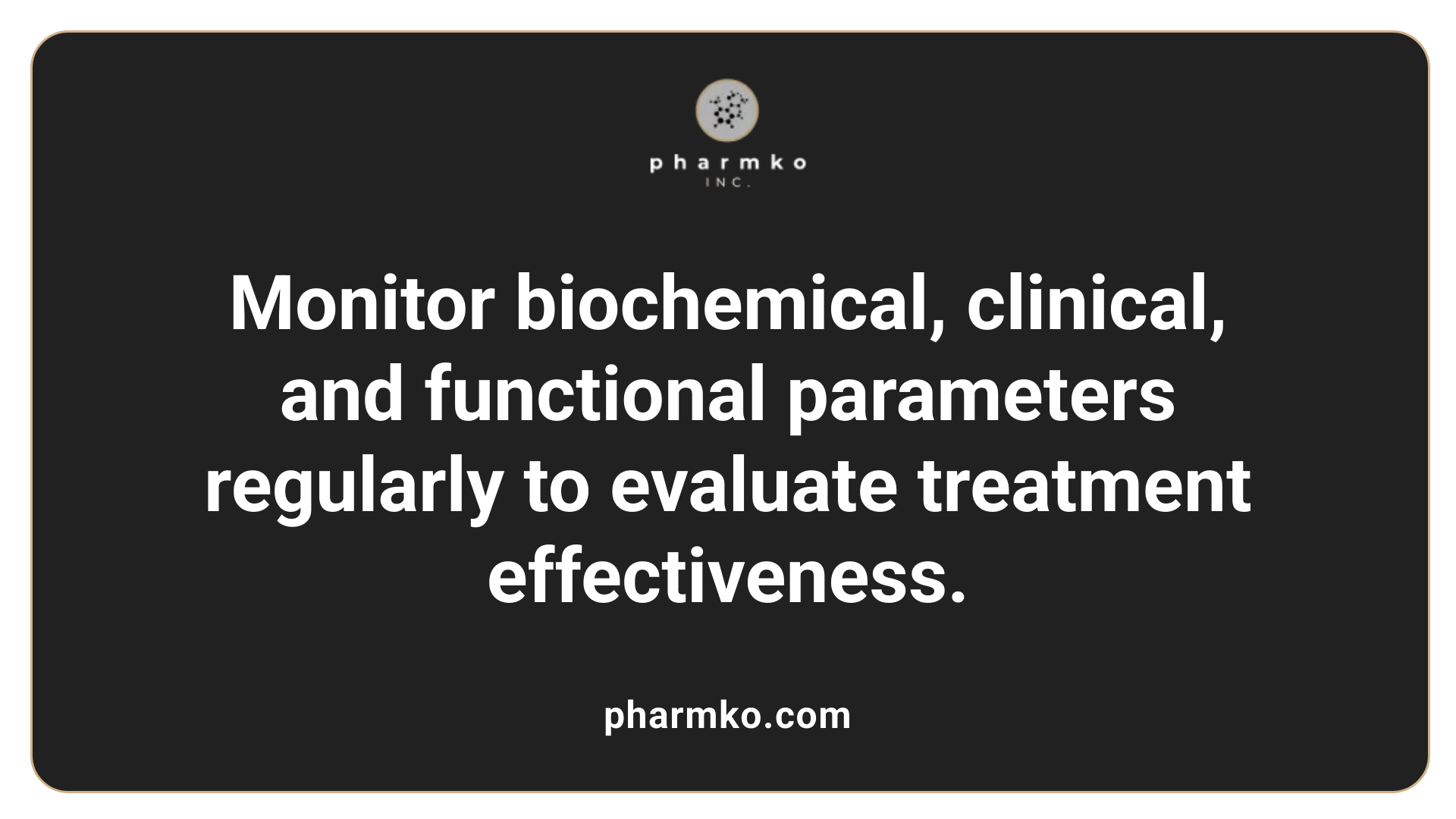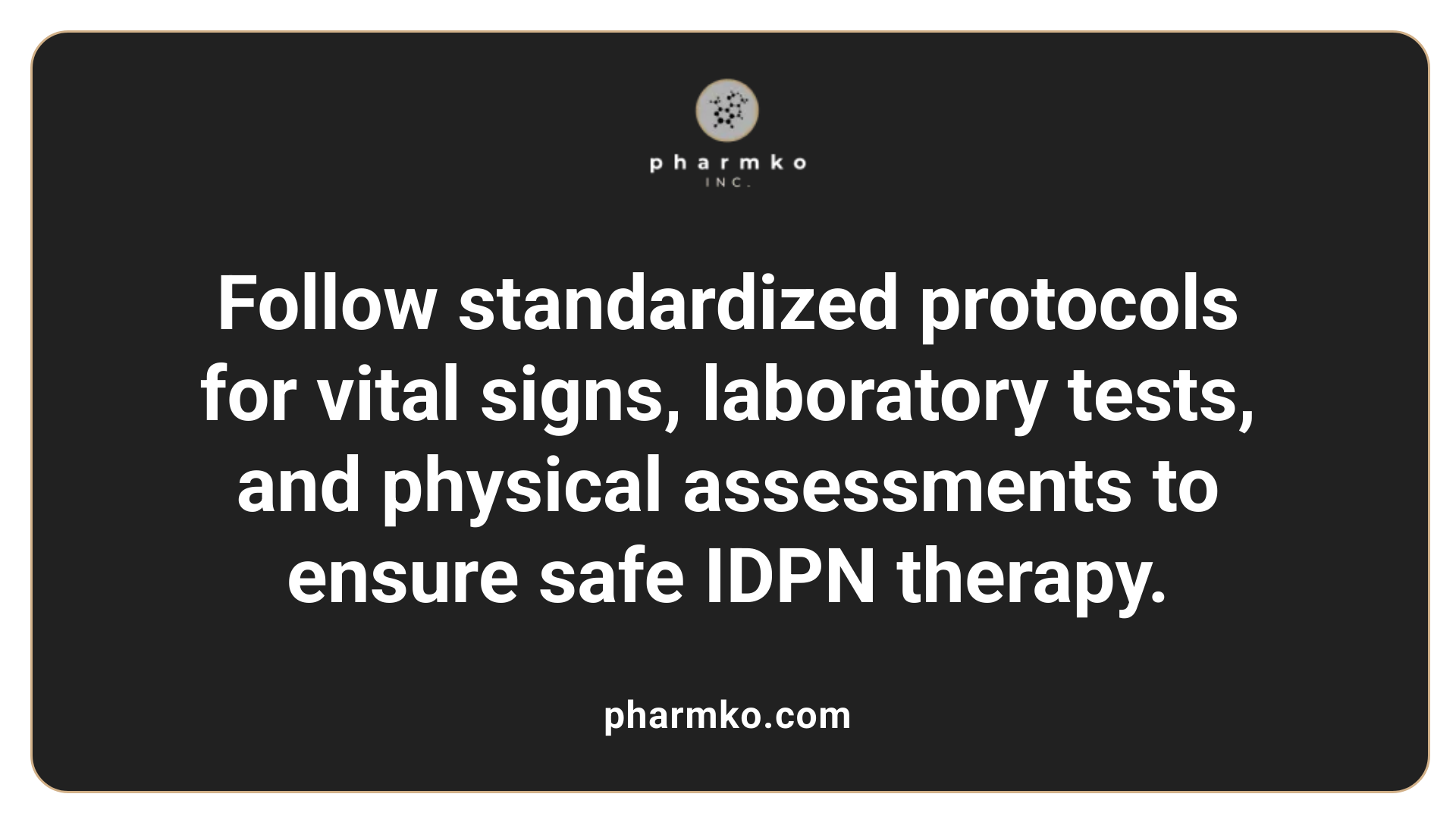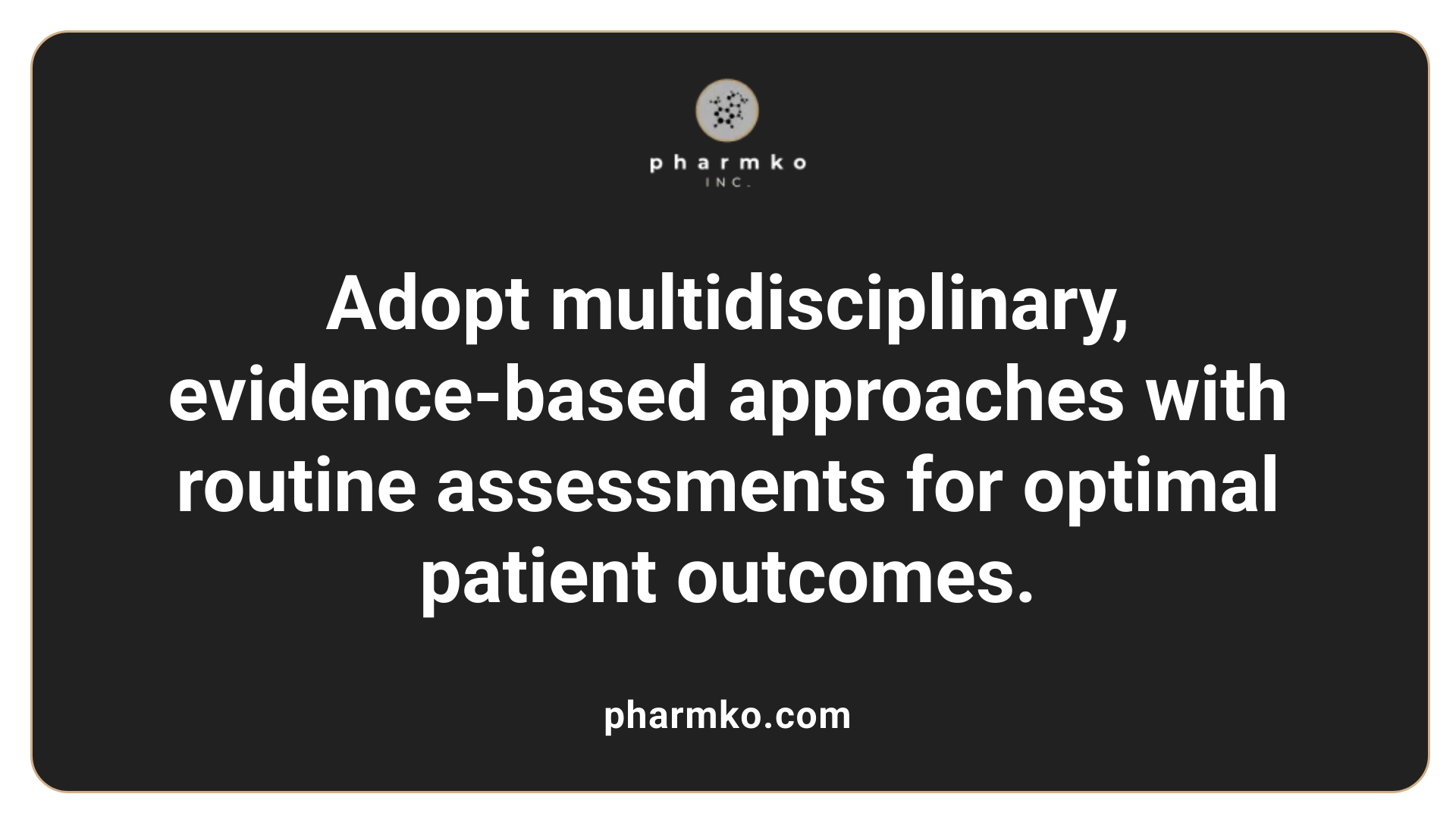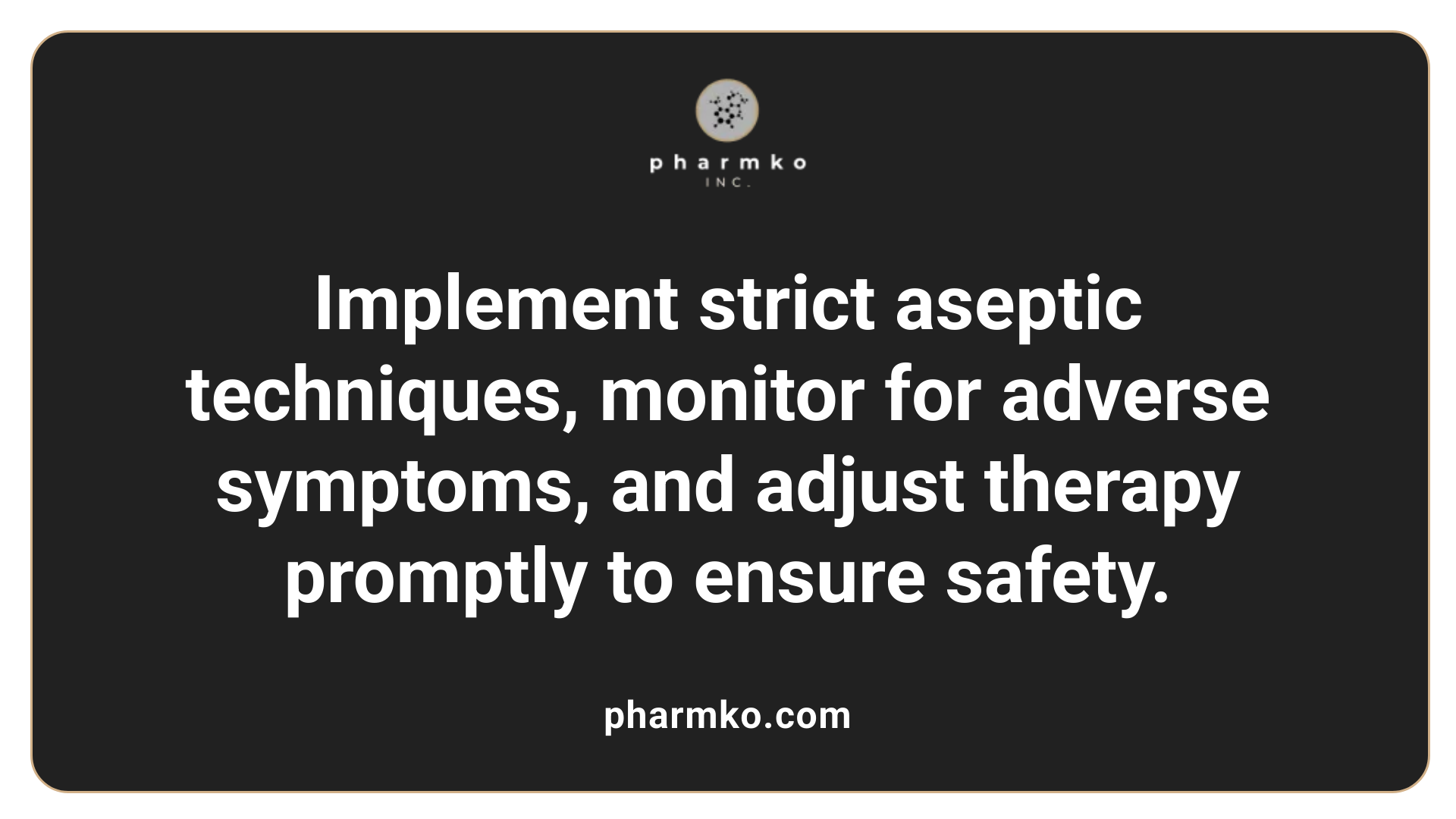Best Practices for Monitoring IDPN Patients
Intradialytic Parenteral Nutrition (IDPN) presents a vital nutritional support option for malnourished patients undergoing hemodialysis. Proper monitoring of IDPN patients is essential not only for assessing therapeutic efficacy but also for ensuring safety and preventing complications. This article explores comprehensive best practices, clinical indicators, and expert guidelines to maximize outcomes for patients receiving IDPN.
Assessing Nutritional Status and Therapeutic Response

How can clinicians monitor nutritional status and evaluate therapeutic outcomes in IDPN patients?
Monitoring and evaluating the nutritional status of patients undergoing Intradialytic Parenteral Nutrition (IDPN) is crucial to ensure the effectiveness and safety of the therapy. Regular assessment involves a combination of biochemical, clinical, and functional parameters.
Biochemically, clinicians focus on serum levels of prealbumin, albumin, and total protein. These markers tend to significantly increase with effective nutritional support, indicating improvements in the patient's nutritional state. Serum prealbumin is particularly sensitive to short-term changes and can be useful for early detection of nutritional response.
In addition to lab markers, clinical evaluations include measuring body weight, assessing body composition, and tracking dietary intake. Techniques like bioelectrical impedance analysis help quantify body cell mass and fat stores, providing a detailed picture of nutritional reserves.
Scoring tools such as the Malnutrition Inflammation Score (MIS) and Subjective Global Assessment (SGA) are invaluable. The MIS evaluates the combined impact of malnutrition and inflammation, with lower scores indicating better nutritional status. The SGA offers a comprehensive clinical impression based on weight history, dietary intake, gastrointestinal symptoms, functional capacity, and physical examination. A decline in MIS scores and improved SGA ratings suggest positive responses to IDPN.
Functional measures like handgrip strength, gait speed, and overall physical activity levels also contribute to the assessment. These parameters often correlate with nutritional status and functional independence.
Monitoring for adverse effects is equally important. Symptoms such as nausea, hypotension, or hyperglycemia during or after IDPN can signal intolerance or complications, necessitating adjustments or cessation.
Over time, sustained improvements across biochemical, clinical, and functional parameters reflect successful therapy. Reassessments typically occur every 3 to 6 months to determine ongoing need or modifications required for optimal patient outcomes.
In summary, a multi-faceted approach—including laboratory tests, clinical scoring systems, physical assessments, and safety monitoring—provides a comprehensive evaluation of therapeutic response to IDPN. This ongoing process helps tailor nutritional interventions, maximize benefits, and minimize risks for malnourished hemodialysis patients.
Implementing Best Practices for Clinical and Biochemical Monitoring

What are best practices for monitoring patients receiving intradialytic parenteral nutrition (IDPN)?
Monitoring patients on IDPN requires a comprehensive approach that includes both clinical observations and laboratory evaluations. Regular assessment of vital signs during dialysis sessions ensures patient stability; this includes monitoring blood pressure, heart rate, and overall hemodynamic status. Any sudden changes or signs of intolerance, such as nausea, dizziness, or arrhythmias, should be promptly addressed.
Blood glucose levels need to be tracked before, during, and after IDPN infusion, particularly in patients with diabetes. Elevated or fluctuating glucose can indicate intolerance or the need for insulin adjustments.
Laboratory tests play a vital role in safety and efficacy assessment. These should be conducted every 4 to 6 weeks and include measurements of electrolytes (potassium, magnesium, phosphate), liver function tests, and triglycerides. Monitoring inflammatory markers and serum proteins like albumin and prealbumin provides insights into nutritional status.
Observation for infusion tolerability involves watching for adverse symptoms such as nausea, hypotension, or changes in heart rhythm. Physical assessments of body weight, dry weight, and body composition measurements—like bioelectrical impedance—help gauge nutritional improvements or declines.
After at least 3 months of IDPN, clinicians should reassess the therapy's effectiveness and safety. Based on these findings, adjustments to the infusion rate, composition, or discontinuation may be necessary. Discontinuing IDPN is appropriate if nutritional goals are met or if adverse effects outweigh benefits.
In summary, best practices emphasize a balanced combination of vital sign monitoring, biochemical testing, physical assessments, and ongoing clinical review to ensure safe and effective nutritional support during hemodialysis.
Utilizing Clinical Indicators and Biomarkers Effectively

What are clinical indicators and biomarkers used to assess the status of patients on IDPN?
Monitoring the nutritional and overall health status of patients receiving intradialytic parenteral nutrition (IDPN) is crucial for optimizing therapy and avoiding complications. Multiple clinical indicators and biomarkers provide a comprehensive picture of patient response and safety.
One of the primary goals of IDPN is to improve or maintain nutritional status. To evaluate this, clinicians often measure body weight, which reflects overall nutritional reserves. Muscle strength assessments, such as handgrip strength tests, and gait speed measurements serve as functional indicators indicating muscle mass and physical resilience.
Subjective Global Assessment (SGA) is a valuable tool that combines patient history and physical examination findings to categorize nutritional status. An improvement in SGA scores suggests better nutritional health.
Biochemically, serum albumin and prealbumin levels are commonly used biomarkers. Increases in these proteins typically indicate an improved nutritional response, although they can be influenced by inflammation and fluid status. Therefore, these markers are complemented by other assessments.
Bioelectrical impedance analysis (BIA) offers insights into body composition. Parameters such as phase angle help evaluate cell integrity and hydration status, providing indirect information about nutritional stores and fluid balance.
Regular laboratory tests include evaluations of electrolytes—potassium, magnesium, and phosphate—due to risks of refeeding syndrome and electrolyte disturbances. Liver function tests and serum triglycerides are also vital, as abnormal values could indicate metabolic complications or intolerance to lipid components of IDPN.
Monitoring symptoms like nausea, hypotension, or arrhythmias during therapy is essential for patient safety and comfort. Such symptoms can be signs of intolerance or adverse effects, prompting timely intervention.
Overall, a multidimensional approach integrates biochemical data, functional assessments, and clinical observations. Tracking these indicators over time enables healthcare providers to adjust IDPN therapy, ensuring optimal nutritional support while minimizing risks.
Guidelines and Strategies from Experts and Evidence

What are expert recommendations and evidence-based strategies for monitoring IDPN therapy?
Monitoring Intradialytic Parenteral Nutrition (IDPN) involves a comprehensive approach that ensures patient safety and maximizes potential benefits. Experts recommend a multidisciplinary team, including nephrologists, dietitians, and nursing staff, to oversee the process.
Routine biochemical assessments are vital. These typically include checking serum albumin and prealbumin levels to evaluate nutritional status, triglycerides and blood glucose for metabolic stability, and liver function tests to detect hepatic side effects. Laboratory tests should be performed before dialysis sessions and at intervals of every 4-6 weeks, especially in the initial months, to monitor trends and detect early adverse events.
In addition to labs, clinical evaluations are crucial. Regular assessments of body weight (preferably dry weight), muscle strength, skin integrity, and gait speed help determine functional improvements or deterioration. Tools such as the Subjective Global Assessment (SGA) and bioelectrical impedance analysis (BIA) provide valuable information on nutritional status and fluid distribution.
Throughout IDPN infusion, staff should observe patients for signs of intolerance such as nausea, vomiting, hypotension, arrhythmias, or allergic reactions. Proper management of infusion parameters, such as infusion rate, electrolyte concentrations, and formulation composition, is essential to prevent complications.
Personalized infusion management includes adjusting the nutrient composition based on ongoing assessment results. For example, if blood glucose levels rise excessively, insulin therapy or glucose adjustments may be necessary. Similarly, elevated triglycerides might require modifying lipid content in the solution.
Monitoring should also focus on detecting complications like hyperglycemia, hyperlipidemia, and fatty liver disease. Regular imaging or additional labs might be indicated if concerns arise.
Discontinuation of IDPN therapy should be considered when nutritional goals are achieved, patient response stabilizes, or adverse events occur. Typically, therapy duration extends over at least 3 months, with reviews at 3 to 6 months to determine ongoing need.
In summary, expert strategies promote an integrated, patient-specific approach emphasizing routine biochemical tests, clinical assessments, close infusion monitoring, and readiness to adapt or cease therapy based on response and safety indicators.
Ensuring Safety and Managing Potential Complications

What safety procedures should be followed to prevent and manage complications related to IDPN?
When implementing Intradialytic Parenteral Nutrition (IDPN), safety is paramount to prevent adverse events and manage complications effectively. One of the primary measures is adhering to strict aseptic techniques during the preparation and administration of IDPN solutions. This helps minimize the risk of infections, which are a notable concern in parenteral nutrition therapy.
Regular monitoring of blood chemistries is also essential. Key parameters include blood glucose levels, triglycerides, serum electrolytes, and liver function tests. Monitoring these markers allows healthcare providers to detect metabolic disturbances early—such as hyperglycemia, hypertriglyceridemia, or liver enzyme elevations—and intervene promptly.
Observation during and after the infusion is crucial. Patients should be monitored for symptoms like nausea, hypotension, signs of intolerance, or volume overload. Such symptoms can indicate adverse reactions or intolerance to the infusion, necessitating immediate adjustment or cessation of therapy.
Adjusting infusion rates and therapy parameters based on individual response helps prevent complications like fluid overload and metabolic abnormalities. Tailoring the volume and composition of IDPN, along with session duration, can optimize nutritional delivery while maintaining safety.
Staff education is another vital component. All personnel involved must be well-versed in protocols for safe preparation and administration. Regular training and adherence to standardized procedures help prevent errors, infections, and other hazards.
Collectively, these safety procedures form a comprehensive approach to managing potential complications associated with IDPN. Consistent application ensures patient safety, maximizes nutritional benefits, and minimizes risks during therapy.
Summary and Future Directions in IDPN Monitoring
Effective monitoring of IDPN patients is crucial for ensuring safety, tailoring therapy, and evaluating clinical response. Combining biochemical assessments, clinical evaluations, and vigilant observation allows healthcare providers to optimize nutritional support while minimizing risks. While current evidence supports targeted use of IDPN in specific cases, ongoing research and adherence to best practices will continue to refine these strategies, ultimately improving care for patients with complex nutritional needs in the dialysis setting.
References
- Intradialytic parenteral nutrition for patients on hemodialysis
- Evidence Brief: Use of Intradialytic Parenteral Nutrition (IDPN ... - NCBI
- [PDF] Navigating Home Care: Parenteral Nutrition—Part Two
- [PDF] Management of malnutrition in patients receiving haemodialysis
- Nephrology - Clinical Nutrition EMEA - Baxter
- Evidence Brief: Treatment for Malnutrition in Hemodialysis Patients
- Intradialytic parenteral nutrition (IDPN) for patients on hemodialysis
- Intradialytic parenteral nutrition for patients on hemodialysis













